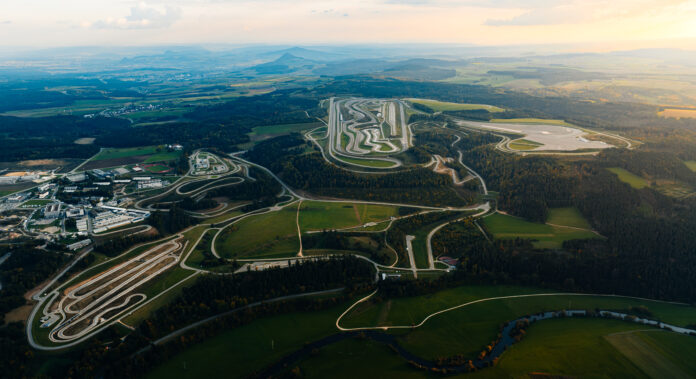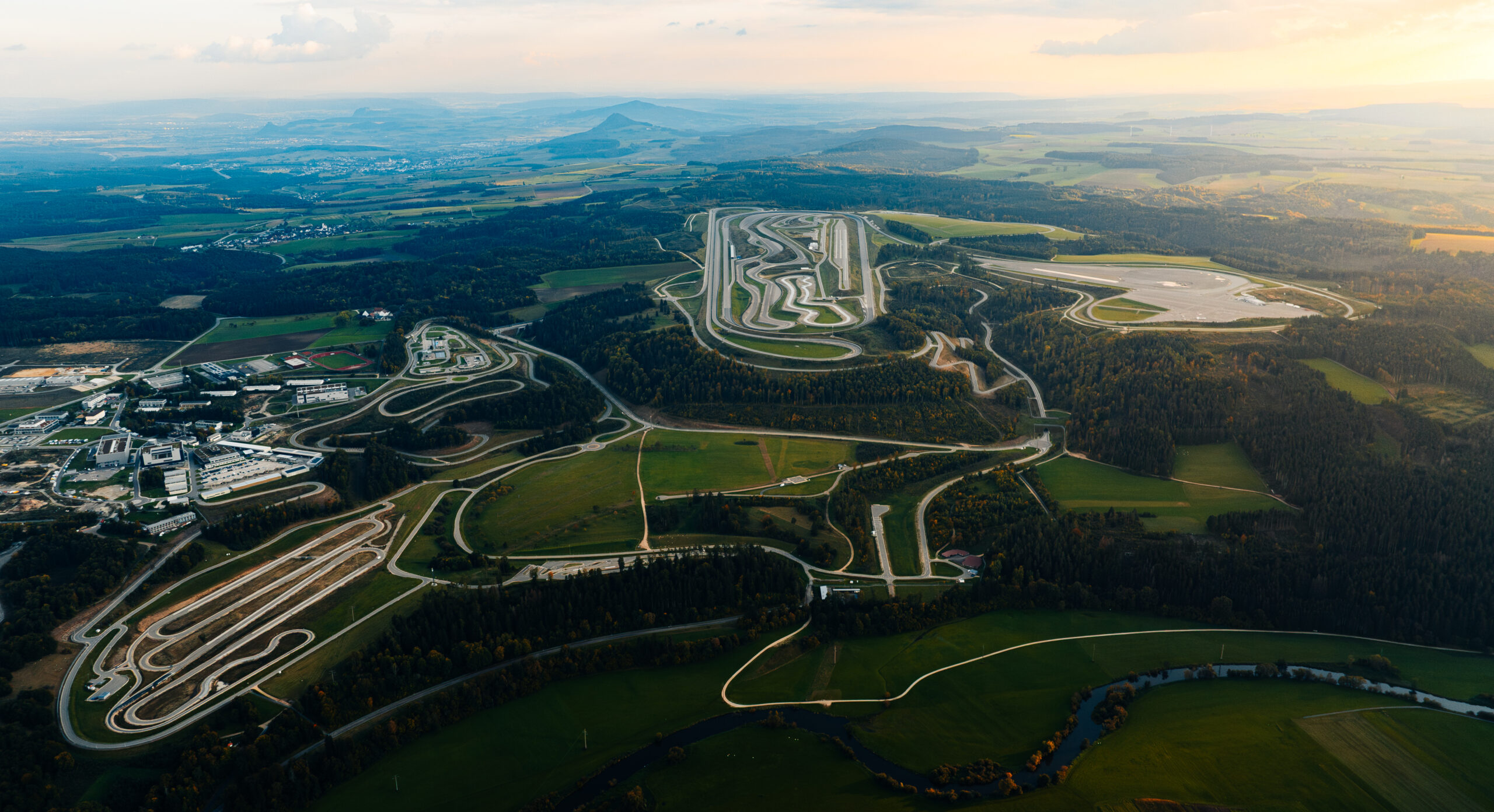With the new, state-of-the-art light testing centre, designed for versatile use, Mercedes‑Benz is once again expanding the diverse testing capabilities of the Global Proving Ground Immendingen. At 135 metres long and eight metres high, the new light testing centre ranks among the largest of its kind in the automotive industry. It enables detailed testing of headlight systems under constant, reproducible conditions – independent of time of day, weather or environmental influences.
A complete country road is authentically recreated over 135 metres. In addition, the asphalt mixture was specially developed to replicate the reflective properties of an aged road as closely as possible. Up to five cars can be tested in parallel – including the simulation of oncoming traffic or vehicles ahead. Reflector posts can be deployed at the sides of the road in 20-metre increments and pedestrian dummies can also be flexibly integrated. The investment in the light testing centre amounts to 10.5 million euros, with a construction period of two years.
Automation meets resilience: Driverless Heide durability circuit
With its high-tech testing facilities and advanced testing methods, the Global Proving Ground Immendingen continues to set new standards across the industry. This also includes the so-called automated Heide durability circuit. In this test, driving robots steer the test vehicles completely autonomously along a rough-road track. The track’s potholes, bumps and cobblestones pose a particular challenge for the chassis and body.
The automation of this process increases the precision of driving manoeuvres, reduces the strain on human test drivers, enables 24/7 operation and significantly accelerates testing – all while maintaining the same level of stress on the cars. Depending on the vehicle type, the test vehicles must complete up to 6,000 kilometres on this circuit, which is equivalent to 300,000 kilometres of customer driving. This means that one kilometre on the Heide durability circuit is equivalent to 150 kilometres on an extremely poor road, littered with deep potholes, among other things. The test module is named after a very challenging rough-road track in the Lüneburg Heath dating back to the 1950s.
Consistent digitisation: more efficient, faster and more sustainable testing
As with all test modules at Immendingen, the Heide durability circuit also has a “digital twin”. The proving ground is digitally mapped down to the sub-millimeter level, and vehicles and their loads are digitally mirrored. This data is used in preliminary simulations, serves as load spectra for test benches and thus enables test results to be quickly fed back to the development departments. Today, this digital testing is so precise that often many thousands of kilometres are driven digitally before the first real test kilometre is driven on the test site.
In concrete terms, this means that, for example, in chassis tuning for each new model series, more than 100 different variations are tested digitally. Only the most suitable variants are then installed in a prototype and tested physically in Immendingen. One of Immendingen’s greatest advantages is precisely this: almost all test requirements for real-life testing – apart from snow, ice and extreme heat – are consolidated at a single location.
“The Immendingen Test and Technology Centre is the first digitised Mercedes‑Benz proving ground – here, real and virtual vehicle testing merge seamlessly. By digitally mapping the proving ground, using automated test programmes and employing state-of-the-art sensor technology, we are making vehicle development more efficient, faster and more sustainable than ever before.”
Markus Schäfer, Member of the Board of Management of Mercedes-Benz Group AG,
Chief Technology Officer, Development & Purchasing
The whole world in Immendingen: 86 kilometres of road across 520 hectares
Ten years ago, Mercedes-Benz started building a unique development environment in Immendingen in Baden-Württemberg – designed to be reproducible, efficient and sustainable. Since then, around 30,000 test vehicles have accumulated more than 100 million kilometres – the equivalent of circling the Earth 2,500 times.
Covering an area of 520 hectares, the proving ground Immendingen combines more than 30 test modules with a total of 86 kilometres of road-simulating tracks and 286 junctions. The grounds depict the real-world traffic environment in many ways: from complex urban intersections to mountain passes with nearly 180 metres of altitude change, from rough roads and cobblestones to motorways and off-road tracks. There are routes that replicate the road conditions and road markings in European countries, as well as copies of roads and road markings from the USA, China or Japan. A total of up to 400 vehicles can be on the roads at the same time in the various test programmes. There are also special tracks with gradients ranging from 30 to 100 per cent.
To test how vehicle sensors behave under low sun or particularly bright light sources, even on overcast days or at dusk, Immendingen features a so-called artificial sun. These high-performance mobile lights are otherwise used on Arctic ships for iceberg detection. In addition, heavy rain and spray can also be simulated using special systems.
Around 80 per cent of the test drives previously carried out on public roads have now been relocated to the site. International testing activities have also been significantly reduced without compromising testing quality – an important measure to shorten development times, accelerate vehicle maturity and reduce the carbon footprint in development.
During peak weeks, a further 2,100 Mercedes‑Benz employees from other plants are on site for testing along with the 250 permanent employees.
Sheep are largely responsible for maintaining the landscape on the test site. As grazing animals, they prevent shrubs and trees from growing on the so-called rough pasture and displacing the species-rich meadow landscape. Several llamas also live on the test site. They serve as protection for the sheep herd against foxes.
Mercedes-Benz has invested 200 million euros in the construction of the site on a former military base since the ground-breaking ceremony ten years ago. Since its opening, an additional 200 million euros have been invested in the expansion of the site.



